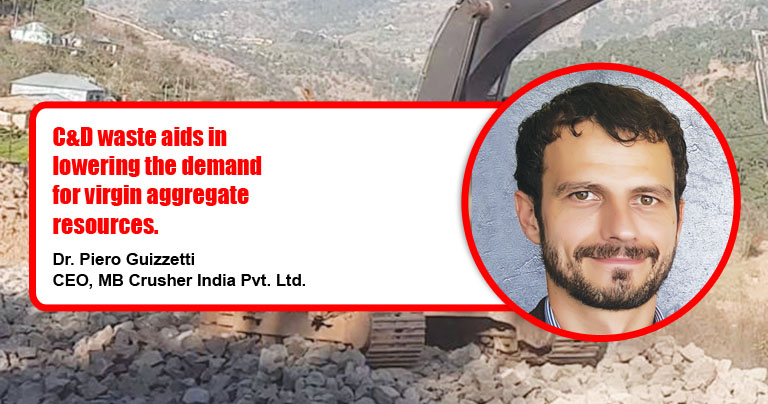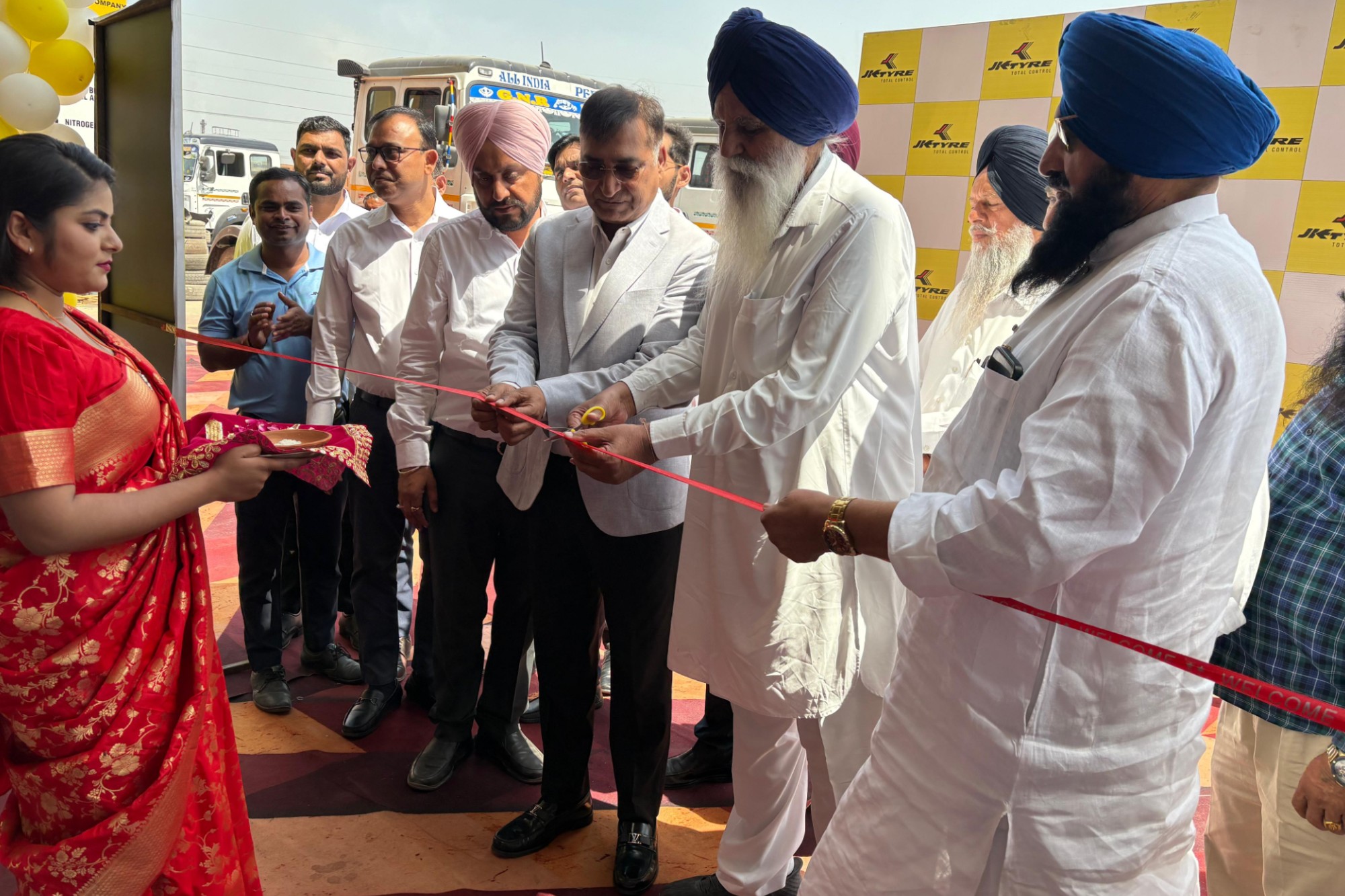Aggregate demand-supply dynamics are highly favourable now
By Edit Team | November 10, 2022 2:21 pm SHARE

“C&D waste aids in lowering the demand for virgin aggregate resources.”
MB Crushers focuses on designing a framework to make post-sales and services function smoothly.
How do you see the present demand-supply dynamic for construction aggregates?
Construction aggregate demand-supply dynamics are now quite favourable. While the need for building aggregates is likely to remain high, aggregate output is predicted to expand rapidly in the upcoming years. New residential, commercial, and infrastructural developments will be in high demand due to the rising population and economic activity. In addition, growing urbanisation trends will boost the market for aggregates used in construction projects, including constructing new roads and buildings and expanding sewer systems. The market is in an excellent position to fulfil future demand because the aggregate output is expected to increase at a healthy rate in the upcoming years.

What are the difficulties in obtaining aggregates to meet infrastructure demand?
These aggregates are frequently located in remote areas, making it somewhat challenging to obtain them. Environmental clearances and/or permits are necessary, but they may be highly costly and time-consuming procedures that constitute obstacles to the demand’s exponential increase. As transportation expenses have a substantial impact, distance from the location is also a consideration. While extreme weather may disrupt supply networks and harm extraction sites, climate change also greatly influences aggregate availability.
What is the evolution of construction and demolition (C&D) waste as a potential source of construction aggregates?
Several businesses have created technology to turn C&D waste into premium building aggregates. Using C&D waste as a source of building aggregates has several advantages. First, it can aid in lowering the volume of waste that is disposed of in landfills. The building sector may also benefit from it as a valuable supply of raw materials. It can also aid in lowering the demand for virgin aggregate resources. All construction sites produce waste, which is recycled to create new valuable materials that can be used to fill foundations for new buildings, excavate pipelines, build roads, and decorate gardens. Additionally, it becomes a commercial resource that may be sold to other businesses if there are no chances for its usage on the building site.
What are the major issues confronting the country’s building aggregate production?
In India, a lot of illegal mining is happening, making it challenging to take a more organised approach locally. Another significant element is the cost of transportation. Transporting aggregates from the quarry to the building site is sometimes excessively expensive and uneven in terms of quality and quantity in hard-to-reach places where there is no supply of stone on site. Various environmental issues must be addressed to guarantee a fair balance between aggregate production and the environment.

What are your thoughts on the aggregate market and crushing and screening technologies?
New crushing and screening technologies are developed daily, and the corresponding life cycles are getting shorter. We predict that contractors will opt for solutions that enable remote control and supervision more and more. As a result, the connection will become a key factor. We are making serious efforts to address these issues. We already give contractors the maximum operational independence on the job site; now, we want to design a framework that makes post-sales and service smooth via a remote, integrated interface that is accessible to us, the client’s site, and the client’s headquarters. Regarding product innovation, we are thrilled to announce that our most recent models have been further improved with modifications tailored to the Indian market. These KIAs provide enhancements to both the strength and productivity of our products.
Cookie Consent
We use cookies to personalize your experience. By continuing to visit this website you agree to our Terms & Conditions, Privacy Policy and Cookie Policy.























































